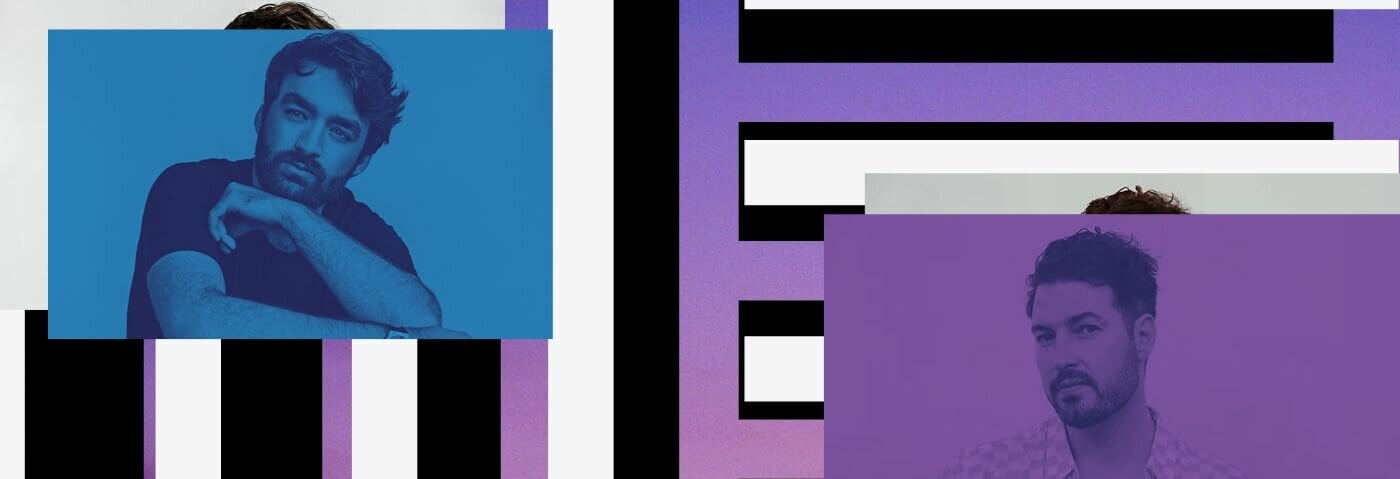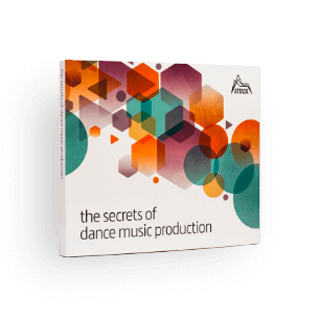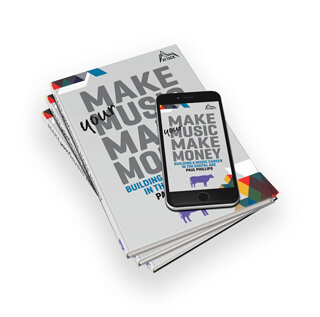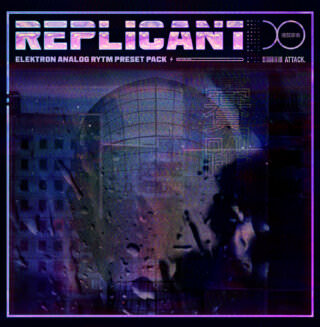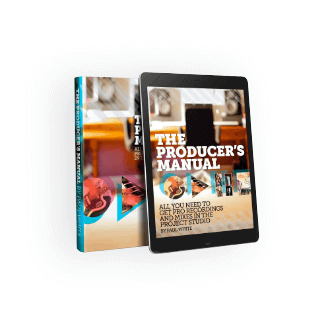In this article, we look at some tricks and methods for producing one of the key sections in any dance music genre – “the breakdown”.
For anyone who produces there are always aspects of the process that make it increasingly difficult to finish your track. It’s happened to us all – you have an incredible eight-bar loop with a punching beat, fat bassline, epic chords, and even a catchy lead part, but how do you turn it into a seven-minute release?
We’ve looked at breaking out of the loop before, but now we’re going to focus on one specific section that many people have trouble with – breakdowns. A good drop is never complete without a perfect breakdown to set it up, but this isn’t always easy to produce.
Nonetheless, there are dancefloor-tested-and-approved techniques that can help you create a basic checklist of ideas to apply during this part of the production process. In this article, we’re going to do exactly that by breaking down two breakdowns (!) and seeing what lessons we can learn from them.
Part one of this series will feature simpler examples. However, as with anything you have to get the simple stuff right before taking it to the next level!
Right – let’s (forgive us) break it down..

EXAMPLE 1: HAYDEN JAMES
‘Good Life’ feat. Emie by Hayden James
We’ll start with some house and then move into techno territory. The sound of many a good night.
Australian producer Hayden James released ‘Good Life’ featuring Emie in 2021 not long after his second album ‘LIFTED’. The uplifting track features bright piano stabs, driving beats and dreamy vocals with a breakdown in the middle between 1:39 and 2:29.
Let’s tell the story of the breakdown as we listen before getting into the details. To follow along more easily, listen to the section on loop while reading the lines below. It’s also important to familiarize yourself with what comes before and after the breakdown, to be fully aware of the context!
At 1:32 a riser kicks off and raises tension until the kick and bass disappear. There is a new snap hitting on every two and four, replacing the clap from before. The piano continues into the breakdown but plays a less active rhythm than the previous sections’ syncopated stabs.
There is a new but very subtle string-like pad with other textures such as repeating vocal chops and synth hits with delay that hit on every fourth downbeat.
In the eighth bar, there’s a riser that cues in the return of the vocals and the four-to-the-floor kick. For the next eight bars the piano plays less, but the chord progression is different. A crash sample slowly begins to hit with every kick. The last four bars of these eight also feature a longer riser, which introduces the final section of the breakdown.
In the last eight bars, the piano rhythm goes back to how it was before the breakdown, but it repeats one single chord as opposed to the original six-chord progression. The piano is also filtered with a high cut and layered with a synth.
A snare roll is accompanied by a repeating one-note vocal chop that gets faster with the kick toward the drop. The snare roll also becomes more active with 32nd-note fills at the end of the breakdown. There are synth sounds that layer some of the snare hits and rolls.
A good drop is never complete without a perfect breakdown to set it up, but this isn’t always easy to produce.
Everything else cuts out two beats early in the 24th bar to create space before the piano stabs come back in. For this re-entrance of the drop, the piano plays in solo with a riser and more intricate snare fills lead us into the return of the full beat. This time the riser ends with a faller, which is the white noise or hiss that plays at the start of the drop.
It is definitely a long story, but we can group the techniques used in this 24-bar section into three question-based categories;
What changes harmonically?
The chord progression is different in all three eight-bar sections of the breakdown.
In the first, it’s the same as before, in the second there is a new progression using the same first two chords, and in the third, it repeats one chord over and over.
The repetition of one chord really creates tension because the listener starts to miss the full progression they’ve gotten used to until now.
What changes rhythmically?
At the start of the breakdown we lose the kick, clap, bass, and hats, but the new repeating snap, syncopated vocal chops and slower piano chords keep our bodies moving! We really start to get back in the zone when the kick comes back in with a more loop-style rhythmic vocal.
In the last eight bars, the original more active chord pattern makes a comeback with the snare rolls and fills really building everything up.
Both the kick and the repeating vocal chops go from quarter notes to eighth notes in the last four bars. The snare fills are the main element adding more rhythmic interest as the drop approaches.
What are the new elements? Or what kind of ear candy is there?
Vocal chops are used before the breakdown but the ones in the breakdown are much more ambient.
There’s a new drone and high string pad, as well as an almost guitar-like synth hit that hits on numerous downbeat.
Risers and reverse cymbals are used throughout to create tension and signal any kind of change. The kick is layered with crash hits. The repeating chord in the last eight bars sounds like a new synth or a filtered version of the piano. The snare roll has many fills that are sometimes layered with a synth texture.
What lessons or ideas can be drawn from these amendments?
- Experiment with changing your chord progression in different parts of your breakdown without changing it too much. Try ideas like changing the last couple of chords, shortening the progression or even just looping the first chord!
- Even if you take out your main beat elements in the breakdown, make sure your rhythm is continuing and developing in some shape or form.
- Don’t be afraid to bring back your kick early on. Tension can be created in many ways that don’t involve getting rid of the kick for two minutes!
- Make sure to have repeating elements that get faster as the drop approaches.
- Create a brand new ambience in your breakdowns with pads, synths, vocal samples, reverb and other effects.
- Take the time to produce (or sample) high-quality snare rolls with fills. Layer these fills with synths or effects.
- Use risers to lead into different sections of your breakdown and use fallers when your drop hits!

EXAMPLE 2: OLIVER HELDENS
‘Kronos’ by HI-LO
Oliver Heldens has dropped some deep dark techno bangers with his HI-LO alias in recent years.
One of these ‘Kronos’ was released in 2020 and found itself among the top 10 most supported techno tracks on 1001Tracklists in no time. Its breakdown is slightly simpler than that of our previous example, but it does the job perfectly.
The 32-bar section starts at 2:09 and ends at 3:10.
We’ll describe what’s going on and then use the same three questions we used in the previous track to analyze what kind of ideas Heldens has used:
Right before the breakdown, a riser followed by a metallic hit builds up to the section. (The riser and hit are used frequently throughout the whole track to signify a new section).
The bassline continues to play the same line but its lows have been cut. There is a new chord pad sound that plays chords with every bass note. The only drum element left when the breakdown starts is the clap hitting on the 2 and 4 of each bar.
Both the arpeggio melody and chords start at a lower volume with their high frequencies cut. They both open up as the breakdown progresses. On bar nine the bass starts to play additional fills that it wasn’t playing before. At 2:33 a soft off-beat hi-hat starts to play. During the sections between bars sixteen and 24, you start to hear a subtle snare roll that gets louder and louder until 3:08 when it cuts out right before the drop.
For the last eight bars, the pad chords sound more blurry and less clear. This could be done by adding a large reverb to the pad so that it has a more drone-like quality. It could also be a completely new and more ambient pad playing slightly different chords.
From 3:03 a riser is used to add that last bit of anticipation that ties everything together. There is also a filter or EQ sweep at the same tie as the riser, cutting all low frequencies of every part until the drop.
What changes harmonically?
The bassline continues to play as before, but there were no chords in the track until the breakdown. The new chords that come in work well with the arpeggio melody because that melody was definitely built using notes from the chords!
If a bassline is the main element of your track, try keeping it playing in the breakdown with its low-end cut. You can also add variations like different notes and fills.
What changes rhythmically?
From a drums perspective, the clap carries the rhythm. An off-beat hi-hat and snare roll come in toward the end. The bass riff has more notes starting from the ninth bar and this fills in some of the empty space. The arpeggio melody starts out quietly but its swing really contributes to the rhythm.
What are the new elements and what kind of ear candy is there?
The pad sound is the real hero of the breakdown because the way it opens up tells the whole story. It starts quietly but then by the end, it becomes a wall of sound encompassing everything.
There is definitely some intricate automation here, as there is with the arpeggio melody. This automation could be on the volume, filter cutoff, and filter resonance, as well as on effects like phasers and reverb.
One big ear candy trick used is the filter sweep at the same time as a riser before the drop. This really adds impact when the low frequencies eventually return!
What lessons or ideas can be drawn from these?
- If a bassline is the main element of your track, try keeping it playing in the breakdown with its low-end cut. You can also add variations like different notes and fills.
- A breakdown can be a good section to introduce chords if you haven’t used them earlier in your track.
- A clap, hi-hat and simple snare roll can be all the drums you need in a breakdown – if your other sounds are large enough!
- Spend time on sound design for your pad patches because they can give you enough material to fill a whole breakdown. Automating pads and synths to start quietly and end powerfully is a very common trick!
- Use risers and filter sweeps – both together and separately.
And finally, stay tuned for Part 2!
If you like specific parts to be broken down you might Red Rackem Wonky Disco Bassline Breakdown.
